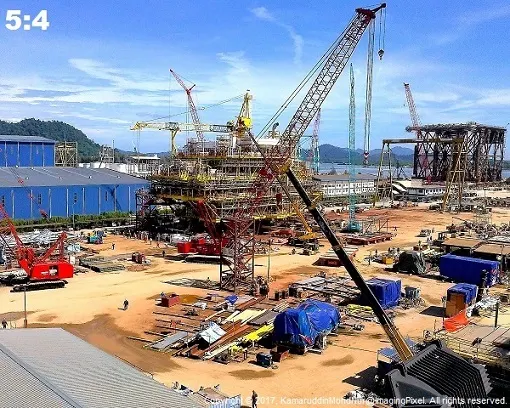Notes On Photography: What is the image aspect ratio in photography and how it affects the orientation and framing of your images.
The image aspect ratio in photography is the proportional relationship between the width (x) and the height (y) of an image. This value is commonly expressed as two numbers separated by a colon (x:y), as in 3:2, 4:5, or 16:9. This ratio is applied universally across all image formats regardless of the image's actual size, big or small, and its main use is in the presentation of videography aspect ratios of films in cinemas, still camera photography, and television, DVD, and DVD Blu-ray Disc display formats.The most common aspect ratio in still photography today is 3:2, which is based on the image size of 24x36mm captured on 35mm film cameras.
This image aspect has been carried over to digital photography with image sensors manufactured in the same aspect proportion, be it full-frame or APS-C-sized sensors. Micro four-thirds and a range of compact digital cameras are fitted with 4:3 aspect ratio sensors. Current smartphones tend to capture images in the 16:9 aspect.
3:2 Image Aspect Ratio
The standard image aspect ratio is found on all 35mm film cameras and digital camera derivates that are fitted with full-frame, APS-C, and APS-H-sized sensors. This aspect ratio was first introduced by Oskar Barnack for Leica cameras early in the 20th century.
3:4 Image Aspect Ratio
A very uncommon ratio, a product of the half-frame 35mm film cameras where the image captured is half the size of a standard 24x36mm film frame. Normally designed to be shot in portrait or vertical mode, the image negative image of half-frame cameras is 14x24mm.
1:1 Image Aspect Ratio
The traditional square format was made famous by the Rolleiflexes, Hasselblads, and Pentacon Six TL. It's also used by toy cameras like the Holga and Diana. The only 35mm square image producers left are plastic cameras made by Lomo and the curious Blackbird 35mm twin-lens reflex camera.
4:3 Image Aspect Ratio
Used by micro four-thirds cameras, most compact cameras, digital medium format cameras, and medium format film cameras that use the 6x4.5cm format.
5:4 Image Aspect Ratio
Used by large format cameras that use sheet film in 5x4 inch or 10x8 inch sizes.
7:6 Image Aspect Ratio
Used by medium format cameras in the likes of the Pentax 67 film camera series and the rangefinder Mamiya 7II. Negatives measure 6x7 centimeters.
16:9 Image Aspect Ratio
This panoramic format is used by some medium-format panoramic film cameras and many current smartphone cameras.
In-camera setting
Many recent digital cameras come with a function that can change the aspect ratio of the image you are shooting. The availability of this function does permit a level of creative flexibility in the framing and composition of a photograph.You must remember that if you are capturing the image in JPEG, the image will be cropped to that aspect and there is no reverse in the process. Shoot the image in RAW instead, where the image is saved as captured by the entire sensor, and do your crop and other edits in post-processing.




















